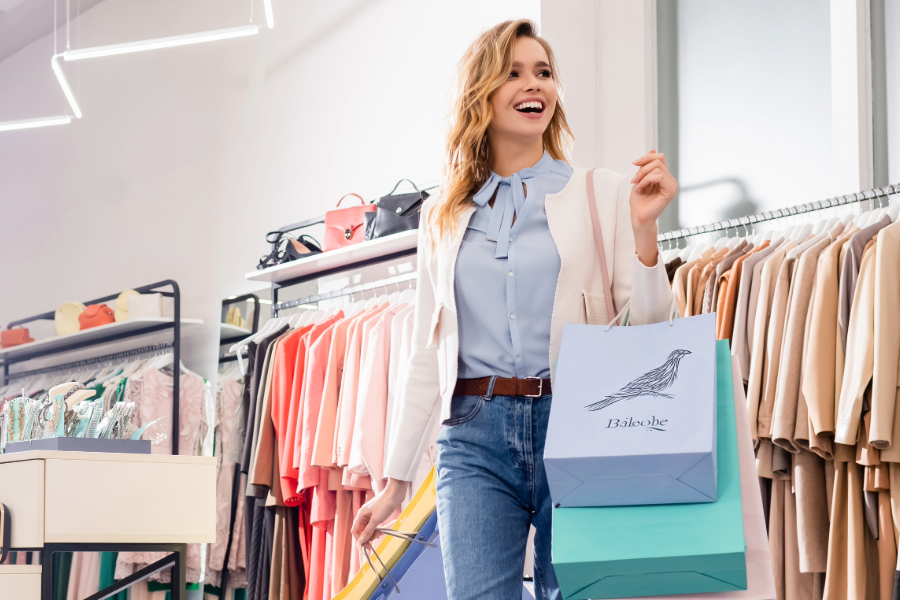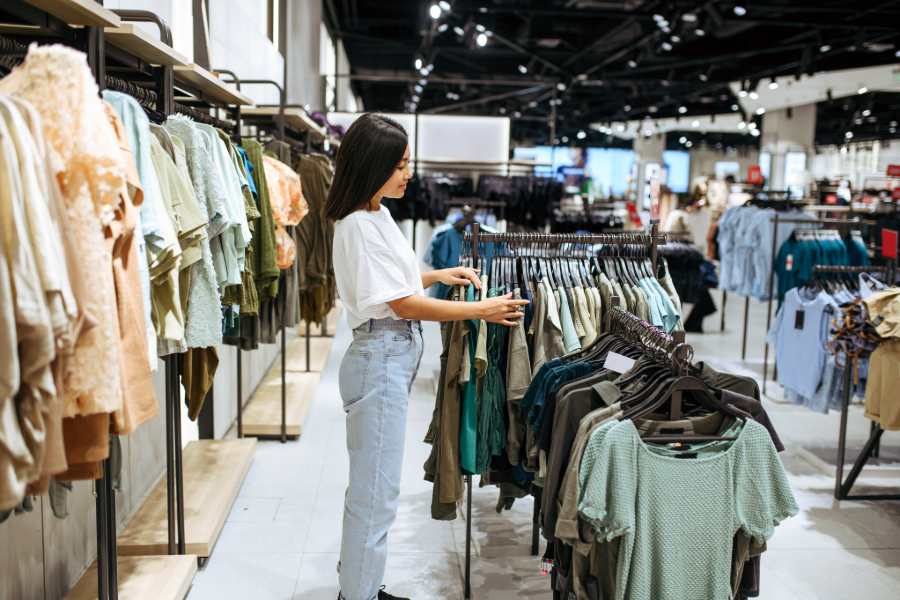The retail landscape is evolving in unexpected ways, and brick-and-mortar stores are making a powerful comeback. Forrester projects that by 2028, U.S. offline retail sales will hit a whopping $4.2 trillion, accounting for 72% of the total retail market. The National Retail Federation (NRF) has also reported that although eCommerce surged to almost 19% of retail sales during April 2020, this level has since declined to 15%. While still above pre-pandemic numbers, the market shows a clear shift back toward in-person shopping experiences.
So, what’s fueling this resurgence? And why does it make your packaging strategy more important than ever?
Why Shoppers Are Returning to Stores
The draw of in-store shopping is that it provides an immersive, hands-on experience that online shopping can’t replicate. People enjoy seeing, touching, and even trying products before purchasing, especially for items like apparel, beauty products, and specialty foods. Shoppers also crave the sense of discovery and connection that a physical space offers.

This means retailers have to think beyond just displaying their products. With more foot traffic, every interaction a customer has with your brand matters—starting with the shopping bags and boxes they carry out of the store.
Packaging as a Marketing Tool in the Brick-and-Mortar Resurgence
With the renewed focus on in-store shopping, packaging has taken on a more prominent role. Custom-branded bags aren’t just for holding products—they’re walking advertisements, catching the eyes of countless potential customers as they make their way home, to work, or through bustling city streets.

When a customer walks out of a store with an eye-catching branded bag, that packaging becomes a billboard for your business. Unlike digital ads, which may be scrolled past, or even social media posts, which are fleeting, a beautifully designed shopping bag has a lasting impact. The more distinctive and visually appealing it is, the greater the chance it will be noticed, sparking curiosity and drawing in new customers.
Designing for Impact: The Essentials of Effective Retail Packaging
As the competition in physical retail space heats up, businesses must prioritize packaging that not only protects their products but also resonates with their brand identity. Here are some key strategies for making your packaging stand out in the current retail landscape:

- Use Bold and Recognizable Branding
Strong, clear branding on bags, boxes, and tissue paper reinforces your company’s presence. Ensure that your logo, colors, and design elements are consistent across all packaging to create a cohesive brand experience. - Incorporate Visual Appeal and Uniqueness
Whether it’s with unique colors, creative typography, or engaging artwork, a memorable design makes a big difference. Choose elements that align with your brand’s personality and values, whether that’s luxury, sustainability, or a fun and modern vibe. - Highlight Eco-Friendly Choices
Many shoppers today prioritize sustainable options, and packaging is an opportunity to showcase this commitment. Opt for reusable bags or packaging made from recycled materials. Beyond the practical impact, this sends a positive message about your brand’s values. - Consider the Practical Aspects
A functional, well-constructed shopping bag or box enhances the customer’s experience. If the packaging is easy to carry, protects the items inside, and looks impressive, customers will likely appreciate and remember your brand even more.
The Long-Term Impact of Strategic Packaging
In today’s retail environment, where brick-and-mortar stores are reclaiming their relevance, every detail counts. By investing in custom, branded packaging, businesses can amplify their reach and create lasting impressions. Your packaging doesn’t just protect your product; it tells your story, connects with your customers, and—most importantly—becomes a crucial part of their shopping experience.
With the resurgence of physical retail and the expectation that offline sales will dominate the market for years to come, now is the time to rethink and elevate your packaging strategy. Embrace the opportunity to turn every customer into a brand ambassador with packaging that demands attention, sparks curiosity, and enhances your brand’s reputation.
